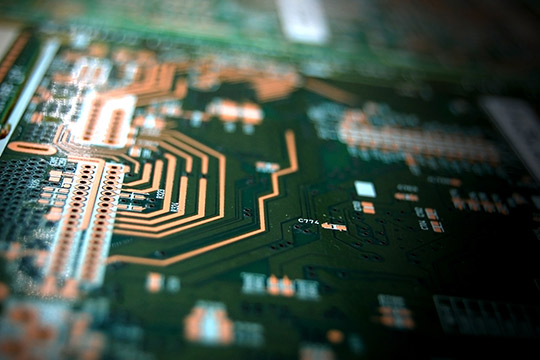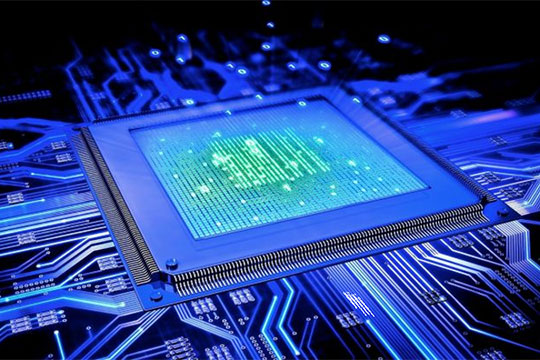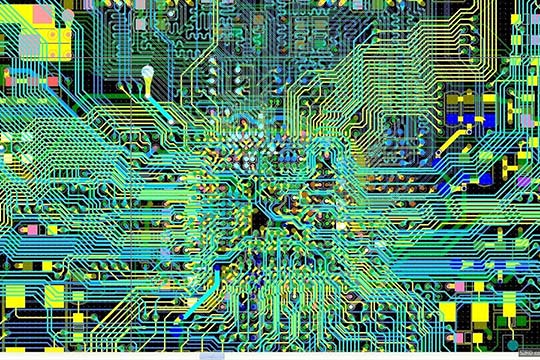TECHNOLOGY FOCUS
Critical Infrastructure facilities that support life and our way of living for computer/business/distribution/communication/manufacturing systems have become a significant part of our modern critical infrastructure system for survival
Electrical transients and overstress, such as that generated by lightning and switching of reactive loads, can cause failure, permanent degradation, or temporary malfunction (upset) and even severe damage to electronic devices and systems.
Modern electronics are extremely vulnerable to electrical transients and overstress, which are “predictably unpredictable”. Protection measures can be designed and implemented, are available, but many businesses are not aware of the threat and/or not willing to invest the time or money: There is a prevailing “It Can’t Happen” attitude
Regardless of their predictability, equipment must be designed to survive all applicable threats. Owing to the high energy levels of these events, the impact of electrical transients and overstress is often damage to equipment and potential “down time” of domestic, industrial and critical facilities and infrastructure. Studies have shown that almost 30% of all household insurance claims were due to electrical overstress and overvoltage.
Cost effective protection of government industrial, domestic consumer electronic systems, not to mention aerospace systems used on commercial aviation, from electrical overstress and overvoltage are of great importance. The increasing necessity for transient protection in government, commercial, industrial and consumer systems, and in particular – in telecommunication and data centers (up time required >99%) and medical applications, a wide range of international standards addressing transient and electrical overstress immunity have been developed (e.g., IEC-61000-4-5, IEC-61000-4-12, ANSI C62.41 (IEEE 587), ETS-300-386, FCC Part 68, as well as the RTCA-DO-160, Section 22 for aviation systems and IEC-61000-2-9&10, describing the civilian HEMP environment and many others) and are applied through directives and regulations (e.g., the EEC EMC Directive, The EEC Medical Devices Directive, civil aviation regulations, etc.) due to the safety aspects related to these effects. Meeting the transient and electrical overstress is therefore both a technical necessity as well as a legal requirement.
The extensive use of modern electrical and electronic equipment in all aspects of our life, and the increased sensitivity of the new technologies used for electronic and telecommunication systems, requires the understanding of the transient and electrical overstress phenomena and their effects and the incorporation of cost-effective protection measures against the harmful effects of electrical overstress and transients into the equipment and installations.
The lack or shortcoming of proper transient immunity design measures has often led to reduced operational availability of equipment and facilities, increased maintenance costs and even extensive damage to facilities and safety hazards to personnel. At a lower, but no less important, is the cost of equipment returned during warranty time, due to electrical overstress and transients.


COURSE CONTENT
This three-day course provides the trainees with the fundamental understanding of electrical transient and overstress phenomena in equipment, systems and installations, and the primary standards governing transient protection requirement.
In particular, the instructor will familiarize the attendees with the basic concepts and parameters of transients and their waveforms and the methods for estimating the energy contents in these waveforms.
The Course will provide the engineering know-how, to describe transient protection and mitigation techniques and to provide the technical tools enabling the engineer to analyze the vulnerability of equipment and design protection of product, systems and facilities, to transients and electrical overstress in electronic circuits and installations, in order to meet the applicable standards and codes.
The Course will emphasize the basic principles and practical applications, with mathematical derivations and calculations kept to the minimum necessary. In addition, “real life” case studies and practical examples will be provided.
WHO SHOULD ATTEND
The Course is intended for electrical, electronic and computer and process control engineers, who are involved in the design and development, qualification or engineering management of electronic and electrical equipment and systems for government, industrial, commercial, aviation and other applications. In particular – the Course is intended for Engineers involved in the design of power and communication systems, or equipment connected to such networks, thereby exposed to transients, e.g. lightning-induced surges and other sources.
Benefit to the Participants
Participants in the Course will
- obtain fundamental knowledge of the electrical transient and overstress phenomena and their effects
- gain knowledge on transient specifications and standards, and the application of the standards
- learn how to estimate or derive the susceptibility levels of electrical and electronic circuits to transients and electrical overstress
- study the characteristics of basic protection devices, and obtain the knowledge to design advanced topologies of protection circuits
In addition, participants are encouraged to bring forward actual design problems and questions they encountered, which the instructor will attempt to assist in their solution.

Module 1: Fundamental Concepts
- Basic concepts in electromagnetic compatibility, sources, victims and coupling modes
- Nature, sources and characterization of electromagnetic transient, overstress phenomena and threats
- Surge waveform nomenclature, rise time, front time and pulse duration
- Coupling and propagation of electrical transients and overstess, common and differential mode coupling and signals
Module 2: Effects of Transients on Components/Circuits
- Characterization of electrical transient effects on circuits: Failure and permanent damage
- Damage and Upset thresholds of electronic components
- Models for evaluating the damage threshold of components/circuits
Module 3: Transient Standards and Specifications
- Commercial and military overstress protection standards
- IEC-1000-4-X, FCC Part 68 and ANSI C62.41 Series
- RTCA DO-160, Section 22
- Standard overstress waveforms, e.g., 5/50, 1.2/50. 8/20. 10/700, Ring Wave, Damped Sinusoid, etc.
Module 4: Transients and Overstress Characteristics
- Energy content and transfer in transients; the Action Integral
- Energy dissipation in protection devices
- The implications of spectral representation on the protection design
Module 5: Principles of Transient/Electrical Overstress Protection
- Transient waveforms conducted and radiated interaction with wiring circuits
- Cable shields – surface transfer impedance
- Effect of cable shields on transient radiated interactions
Module 6: Principles of Transient/Electrical Overstress Protection
- Zoning schemes
- Surge protection principles: Blocking, diversion, limiting/clamping and filtering
- Transient and electrical overstress protection devices: Characteristics, selection and implementation
- Single ended, balanced circuits’ protection
Module 7: Transient and Electrical Overstress Hybrid Protection Circuit Design
- The need for hybrid protection circuits
- Transient and electrical overstress protection design methodology
- Design Examples
Module 8: Transient/Electrical Overstress Protection Testing and Validation
- Standards for transient/electrical overstress protection testing and validation
- Validation of overstress protection – testing and evaluation methods
Module 9: Summary and Wrap-up
Said about the course from previous participants:
"The course had many references to real life cases and problems."
"I liked that all the aspects of different topics were explained in detail."
"It covers a lot of aspects of EMC."

